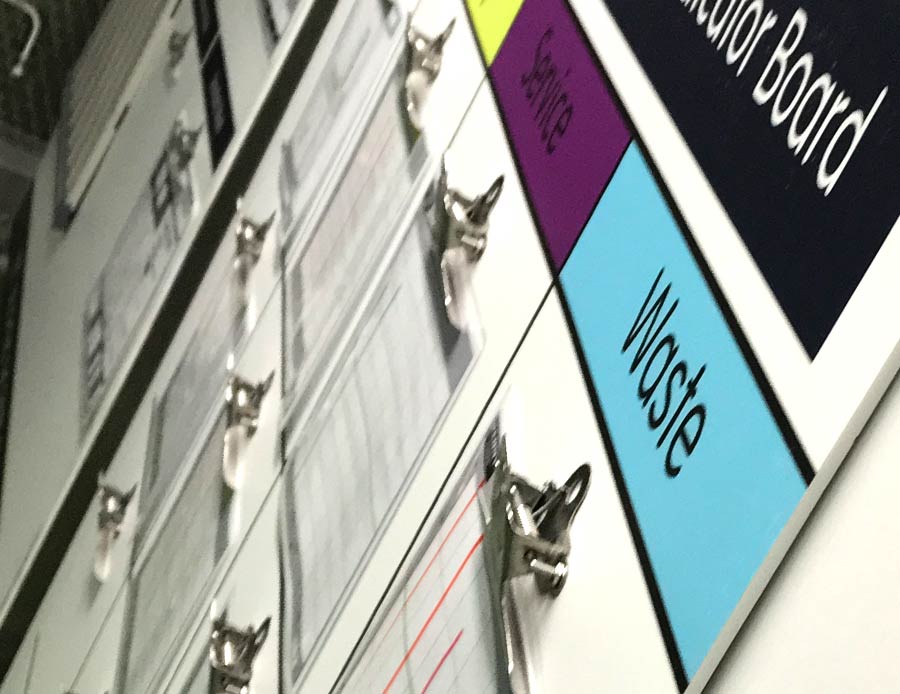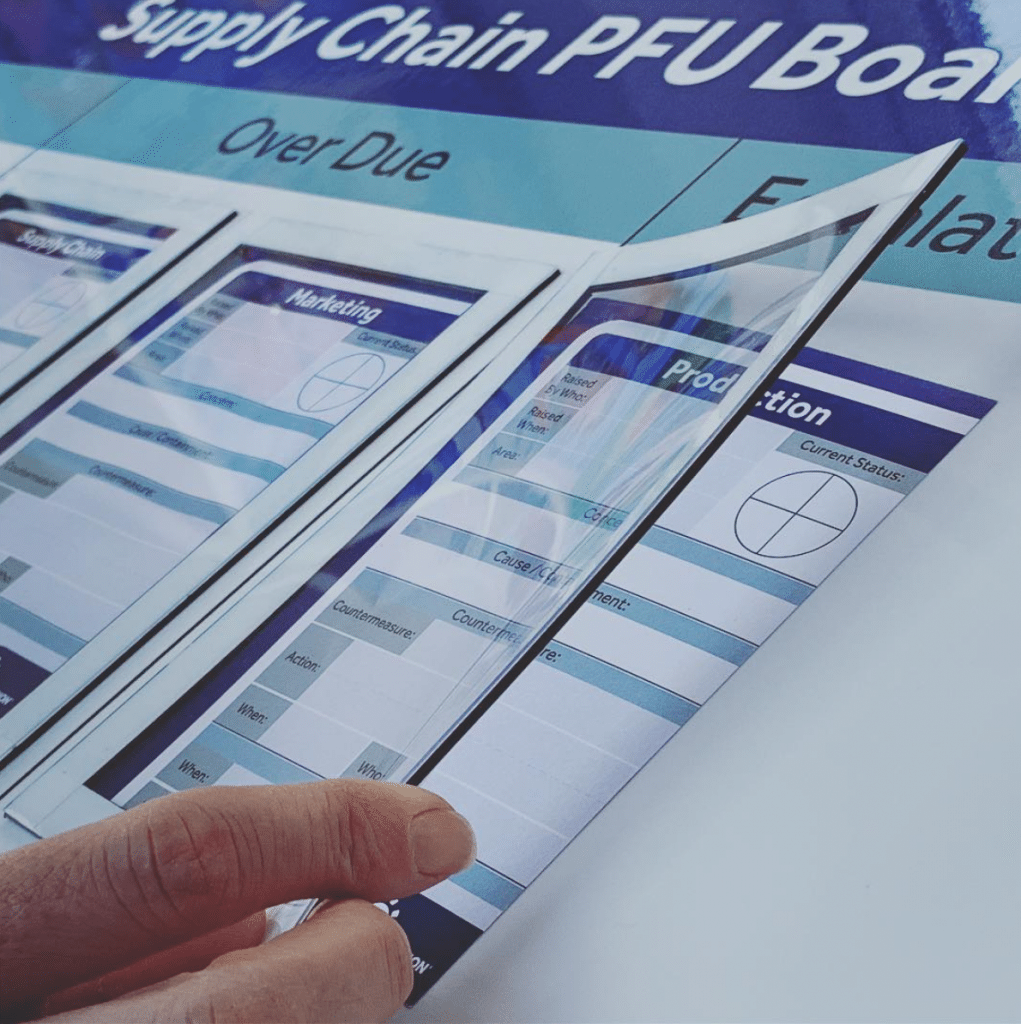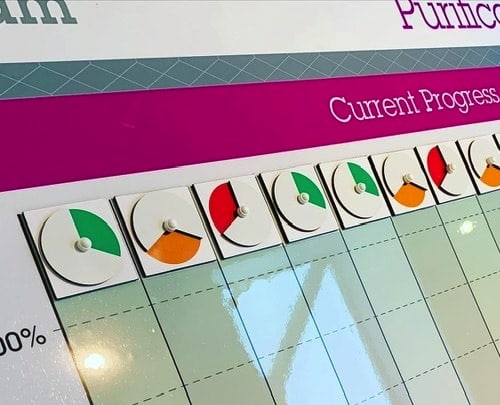Under current pressures of the pandemic, it’s vital to work efficiently. Organise, communicate and evaluate your workflow with visual management.
How visual management creates efficiency
The principles of lean will be all too familiar to readers. (In short, lean manufacturing is a methodology that focuses on minimising waste and maximising productivity.) Importantly, it is at the very heart of efficiency and performance. Moreover, a key aspect of creating a lean environment is communication. Above all, this is how visual management and efficiency come together.
How visual management creates efficiency using measurable targets
Most importantly, use visual management to keep the team focussed on targeted KPIs (key performance indicators). Above all, it’s important to remember that KPIs need to be clear, achievable and measurable. Consequently, this drives efficiency and feeds the cycle of continuous improvement…
Feed the continuous improvement cycle
One of the main tools of visual management are visual management boards. These work because they give a current snapshot of your production flow. Furthermore, they drive performance in a highly visual and intuitive way. Importantly, the team has an instant point of reference that is quick and easy to understand. Likewise, visual management boards create visual points of feedback for specific targets. In addition, visual management boards can take many forms, like, for example, KPI boards and PFU (problem follow up) boards, site safety boards and other communication boards (like those pictured).
Cue for action
Visual management boards may include, for example, a RAG (red / amber / green) status dial. These work because they are a quick and universal reference system. Furthermore, they are particularly useful for tracking performance. For example, teams can instantly see areas needing improvement i.e. those with a red or amber status. Importantly, the visual management board provides the cue to take action to improve performance to achieve green status in those areas. Likewise, successes, (i.e. those areas of performance already on green), can be identified, celebrated and built on.
In conclusion…
Visual management boards work because they:
- Organise workflow
- Improve efficiency
- Increase productivity
- Monitor performance
- Unite the team with common goals
- Promote clear visual cues
- Aid problem-solving
- Communicate targets
- Drive the continuous improvement cycle

KPI boards can help focus on minimising waste and maximising productivity.

Use visual management to keep the team focussed on targeted KPIs.

PFU (problem follow up) boards, create visual points of feedback for specific targets.








